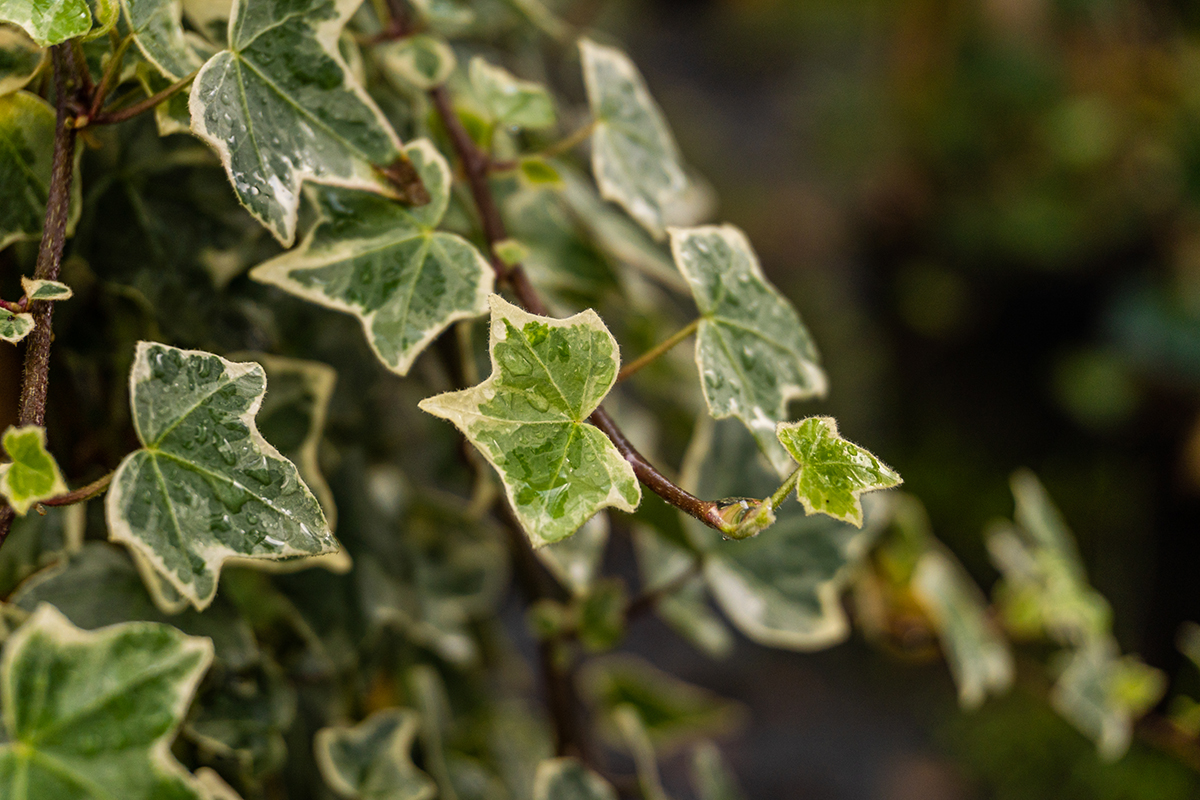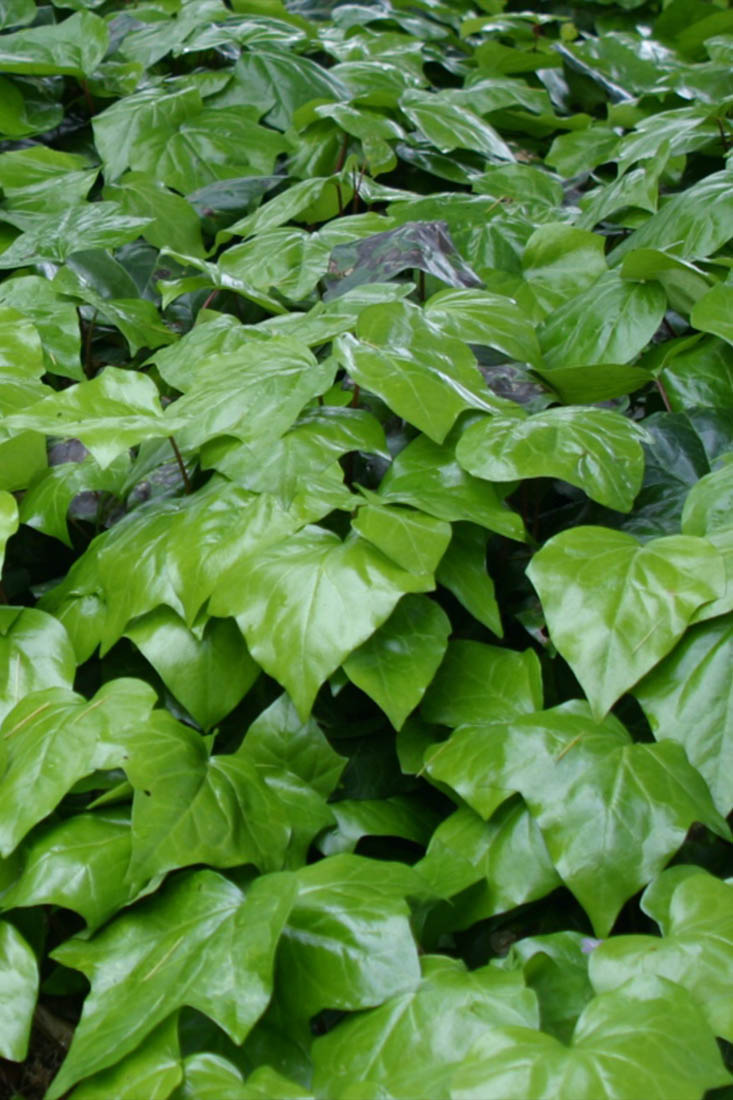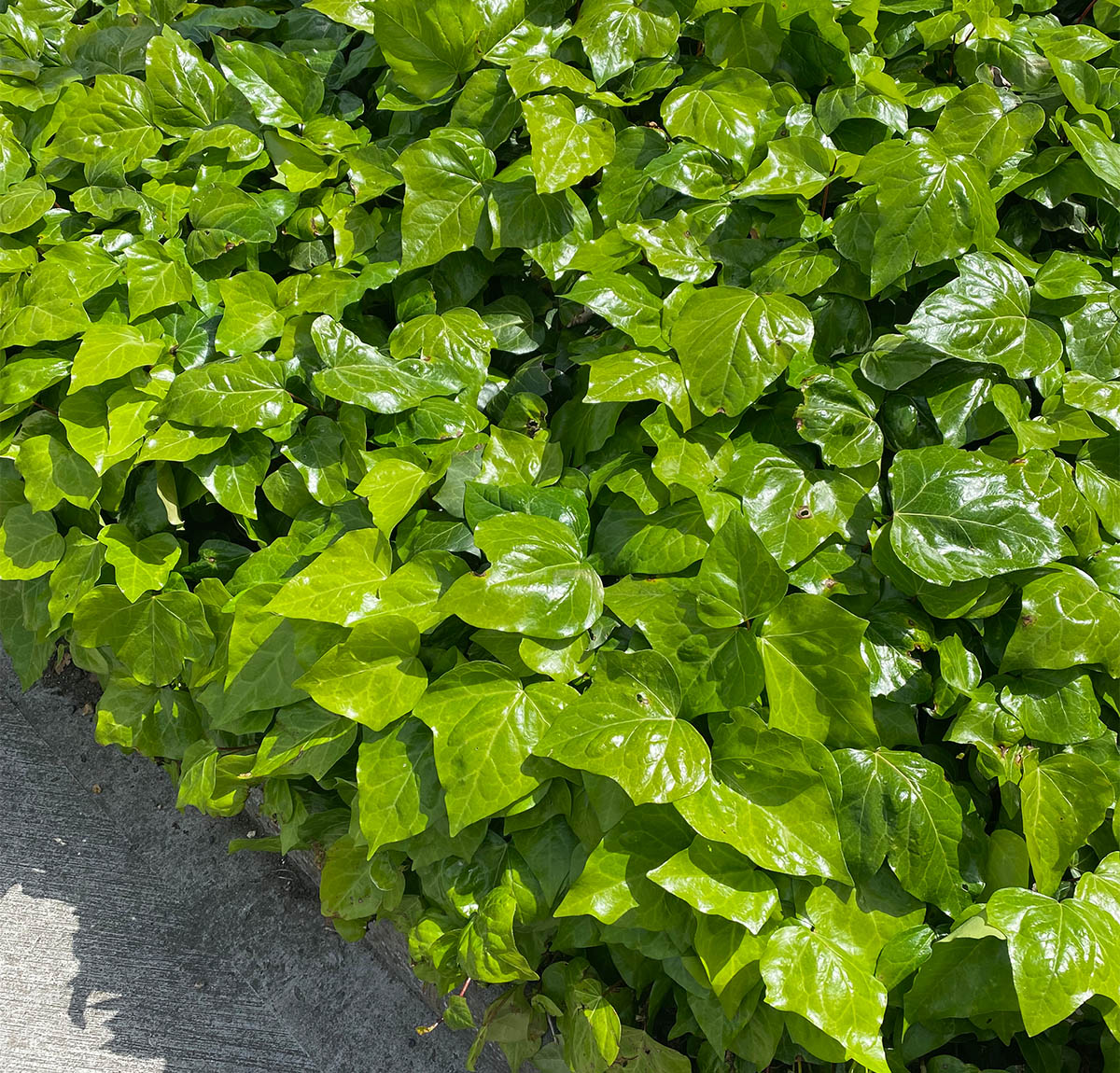Plant Focus: Hedera (Ivy)
A pollinator-friendly late, flowering climber with a variety of uses.
The genus Hedera comprises a group of evergreen plants in the Araliaceae family, native to Europe, North Africa, and western Asia. In the UK, Hedera helix, known also as the ‘common’ or ‘English’ ivy, is one of the country’s few truly native evergreen climbers, often seen covering trees, walls, and woodland floors. Its ability to thrive in shade, resist pollution, and provide greenery year-round makes it a valuable component of both natural and designed landscapes.
Ivy has held cultural significance for centuries. In ancient Greece and Rome, it was associated with fidelity, eternity, and protection, often woven into wreaths or used to adorn temples and statues. In medieval Britain, ivy was a common motif in art and architecture, symbolising resilience and the persistence of life through winter. Its evergreen nature has long made it a symbol of renewal and continuity, themes that still resonate in modern landscape design, where it is used to create lasting structure and stability.
Hedera also plays a crucial role in supporting biodiversity. Its dense foliage provides year-round shelter for birds, small mammals, and invertebrates, while its late season flowers and berries supply vital food sources through the colder months. For urban and rural planting schemes alike, ivy offers one of the most reliable and ecologically valuable evergreen species, combining durability with habitat support.
Key Characteristics:
✓ Evergreen plants with glossy or variegated foliage
✓ Typically climb by means of aerial rootlets or form groundcover mats
✓ Adaptable to a wide range of soils and light conditions including shade
✓ Provide year-round evergreen cover, useful in winter and low-light situations
✓ Many cultivars tolerate urban conditions, pollution and dry soils
✓ Useful for vertical planting, groundcover, banks, slopes and shaded areas
Did you know?
Ivy is one of the latest-flowering plants in the British calendar, blooming from September into November when few other flowers are available. Its small, nectar-rich blooms are a crucial food source for pollinators such as hoverflies, bees, and late-flying butterflies. As the flowers fade, dark berries develop and persist into winter, feeding birds like thrushes and blackbirds at a time when other resources are scarce.
Popular Hedera varieties we grow and sell

Hedera helix
Hedera helix
The common ivy, a vigorous evergreen climber or groundcover with glossy green leaves. Shade-tolerant and highly resilient, often used for screening, erosion control, or covering unsightly structures in public and private landscapes.
Hedera helix ‘Green Ripple’
A striking ivy with deeply lobed, rippled leaves of glossy green. Its textured foliage adds movement and depth to shaded borders or wall plantings. Performs well in full or partial shade and is particularly valued for its rich, dense habit that provides strong year-round coverage.
Hedera helix ‘Glacier’
Compact variegated ivy with small grey-green leaves edged in cream. Moderate growth rate suited to groundcover, containers, and wall cover. Tolerates shade, wind, and poor soils. Evergreen with reliable year-round colour and ideal for adding contrast in mixed planting.
Hedera hibernica
Commonly known as Irish ivy, this robust and fast-growing species is ideal for large-scale coverage. Its broad, glossy leaves form thick mats or vertical screens, providing excellent shelter for wildlife. Hardy, low-maintenance, and tolerant of wind and salt exposure, it’s especially suited to coastal and urban environments.

Hedera helix ‘Glacier’
Hedera colchica ‘Dentata’
A vigorous Persian ivy with large, leathery, heart-shaped leaves edged with soft teeth. It grows quickly and covers large areas, ideal for creating dense evergreen walls or slopes. Its bold leaf shape brings a lush, architectural look to any landscape, while its tolerance of poor soil and shade makes it highly dependable.
Hedera arborescens
A shrubby form of ivy that does not climb but grows upright as a dense evergreen shrub. Produces late-season flowers that attract pollinators and berries that feed birds. Ideal for hedges, groundcover or informal screens. Tolerant of coastal conditions, shade and poor soils.

Hedera dentata

Hedera arborescens
Hedera Bellecour®
Exclusive in the UK to Greenwood, Hedera Bellecour® is a cultivar of ivy that has been specifically bred and selected for non-climbing behaviour. Unlike most Hedera species that produce aerial rootlets and climb up walls or trees, Bellecour® remains in a juvenile form and spreads horizontally as groundcover. Discovered in the Bellecour district of Lyon, France, it was developed for commercial landscaping.
Its key features make it highly suitable for future-proof planting schemes: the foliage remains evergreen, the plant does not become woody, and it demonstrates strong drought tolerance once established. In landscaping, Bellecour® is used as an alternative to grass on banks, slopes and poor soils where mowing is difficult. It suppresses weeds, stabilises soil and maintains a neat, uniform cover. Because it does not climb, it will not attach to or damage masonry, nor does it produce berries. It also tolerates low temperatures down to -20 °C, making it suitable for exposed or urban sites.
For commercial and amenity projects, Bellecour® offers an evergreen, low-maintenance solution that can thrive in drier soils and variable climates, meeting the needs of future landscape design with reduced maintenance requirements.

Hedera Bellecour®
How to grow and care for Hedera
Hedera species and cultivars grow best in moist but well-drained soil and tolerate a wide range of light conditions, from full shade to partial sun. Once established, they require little maintenance. Groundcover forms such as Bellecour® or Hedera arborescens benefit from minimal pruning to control spread. Climbing forms can be pruned occasionally to manage growth or prevent overreach.
They adapt well to urban conditions, coping with air pollution and poor soils. While generally resistant to pests and diseases, ivy can occasionally be affected by scale insects or mites. Overexposure to sun or drought can cause leaf scorch, so providing initial watering during establishment helps ensure resilience. Selecting drought-tolerant varieties is beneficial in modern landscapes with changing weather patterns.
For large-scale or contract planting, groundcover ivies offer a sustainable alternative to grass or bedding, reducing maintenance and providing reliable year-round greenery.
The Hedera genus is one of the most enduring groups of plants for UK landscaping. From vigorous climbing species that green walls and fences to non-climbing and shrubby varieties that cover the ground and stabilise banks, ivy delivers year-round colour and structure with minimal care. Modern selections such as Hedera Bellecour® extend this versatility even further, offering drought-tolerant, non-invasive solutions for future-focused landscape design.
For more information about the types of Hedera we grow and sell, speak to the G Team today.

